Choco Museo
For those of you who get easily bored with museums, there is a new experience throughout Latin America made just for you. It’s called the Choco Museo; a museum dedicated to making chocolate in countries where cacao grows. It’s a place where you can learn about the history of cacao and chocolate as well as taste, buy, and even make your own chocolate.
Recently on a trip to Cusco, Peru, my daughters and I learned about this museum and immediately decided we had to check it out. The museum is small on exhibits but big on experience. They do have multiple rooms that present interesting displays and videos on cacao production and history of chocolate. In addition, they also provide samples and sell their own artisanal chocolates, but the real draw of this museum are the chocolate making workshops. You can choose offerings such as “From the Cacao Bean to the Chocolate Bar” and “Make Your Own Truffles” in either English, Spanish, or occasionally other languages.
We were immediately drawn to the idea of making our own chocolate from scratch and stopped in to make a reservation. Much to our disappointment, all the classes had a limited capacity and were full during our brief stay in Cusco. We tried every trick in the book to get into a class but ultimately were not successful.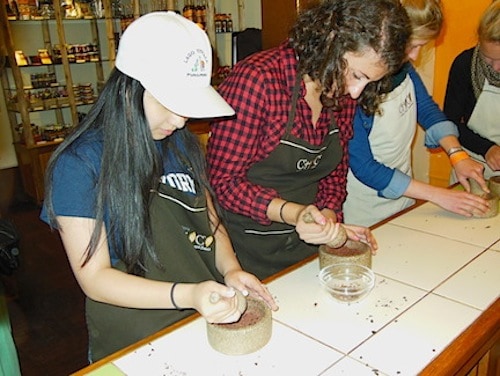
Our travel plans included a long layover in Lima a few days in the future so we went online and booked the two-hour “Bean to Bar” class at the Miraflores location in Lima, Peru. The highlights of the workshop promised that we would learn about the origins of chocolate, prepare three chocolate drinks starting with cacao beans, and make our own handmade chocolates with our own choice of fillings.
Secretly I felt I had an advantage over the other participants. I live near Hershey, Pennsylvania, and have visited the Chocolate World exhibit at least 30 times (admittedly for the free chocolate samples handed out at the end). I practically have the entire attraction memorized. In fact, I am old enough to have taken a tour inside the actual chocolate factory in Hershey. I didn’t tip my hand early, but I had a good idea of what to expect.
We began the workshop with a short presentation on the history of chocolate supplemented with models, posters, and charts. I was particularly impressed with the information on who produces cacao beans and who consumes the most chocolate. As Americans, we’re not even close to the top. We also had a good explanation of the different types of beans, and we got to taste and break them apart. I was also pleased that we did not spend too much time on this. Truthfully everyone wanted to make chocolate.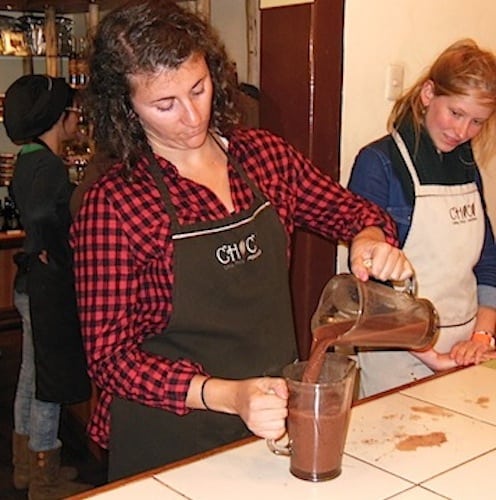
Our instructor, Raul, was both informative and entertaining. He began the class with everyone selecting beans and taking turns roasting them. Soon we were cracking and breaking the shells apart and separating out the nibs, the actual seed inside the shell. Each of us ground our own nibs using a primitive mortar and pestle to a smooth cocoa paste called chocolate liquor. I learned it was called this because the combination of cocoa butter and cocoa paste creates the chocolate flavor.
After this, it was time to make some chocolate drinks. One of the first uses of chocolate by the Mayans and Aztecs was to make flavored drinks. We made a chocolate tea that smelled delightful and had a pleasant light, chocolate taste. Next, we made a Mayan hot chocolate drink flavored with honey and dried chilis that had a much stronger chocolate flavor. Finally, the chocolate workshop kicked into full gear when we made a European milk chocolate holiday drink that had an intense chocolate flavor. All of these were made using our ground chocolate paste. By the third drink, we were wired and ready to make some serious chocolate bars.
The chocolate for making bars was already prepared for us due to the long conching process needed to make smooth, edible chocolate. We had a detailed explanation between the differences between dark, milk, and white chocolate, and we were allowed to work with our own preferred flavor. We had the choice of many different chocolate molds and a large variety of traditional and unusual toppings such as coca leaves, chilis, and Peruvian mountain salt. All of this was supplemented with a liberal amount of real chocolate liqueur sampling and more chocolate tasting. After we were finished, the staff at the museum cooled our chocolates and helped us to wrap them up in decorative bags to take home.
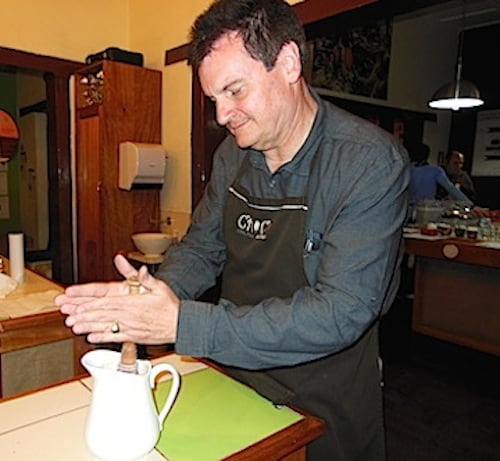
This was a fun workshop from start to finish. The Choco Museo workshops are an experience that will delight both adults and children and the cost (about $25 US dollars) was reasonable considering the time and materials we used.
They have facilities in Lima (Barranco and Miraflores), Cusco, and Ollantaytambo in Peru; Antigua in Guatemala; Granada in Nicaragua; and Punta Cana and Santo Domingo in the Dominican Republic. Some of the facilities even offer multiple day tours to chocolate plantations.
So if you are traveling in Latin America and need a break from sightseeing, check out the Choco Museo. Really, it’s all about making and eating your own chocolate, what’s not to like about that?

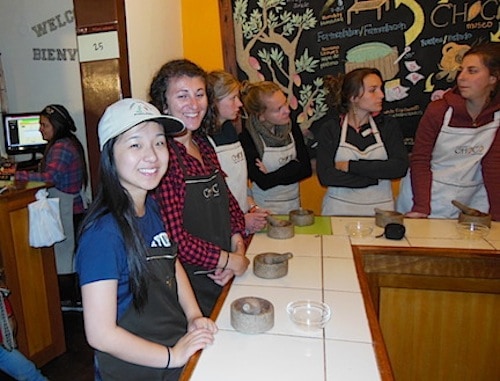

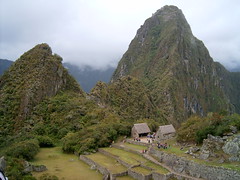 Heading to Machu Picchu? Why You Should Explore the Ruins Around Cusco First
Heading to Machu Picchu? Why You Should Explore the Ruins Around Cusco First Chicha: The Infamous Saliva-Fermented Beer From Peru
Chicha: The Infamous Saliva-Fermented Beer From Peru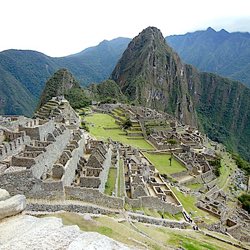 Planning a Trip to Machu Picchu, Peru For First Timers
Planning a Trip to Machu Picchu, Peru For First Timers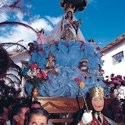 Paucartambo Festival: A Traditional Spectacle – Peru
Paucartambo Festival: A Traditional Spectacle – Peru

